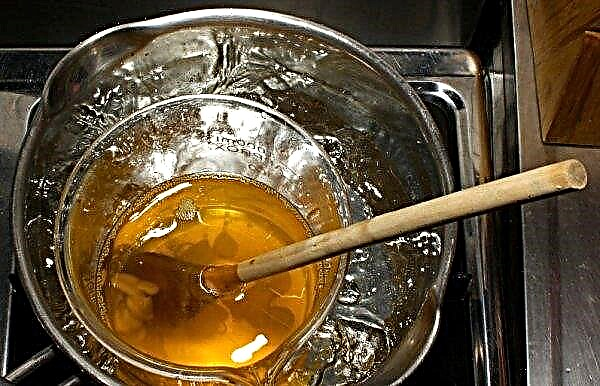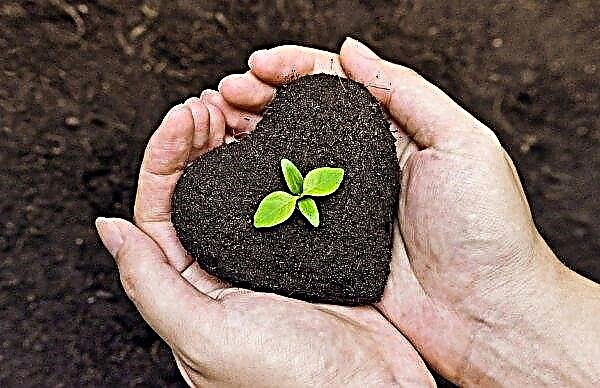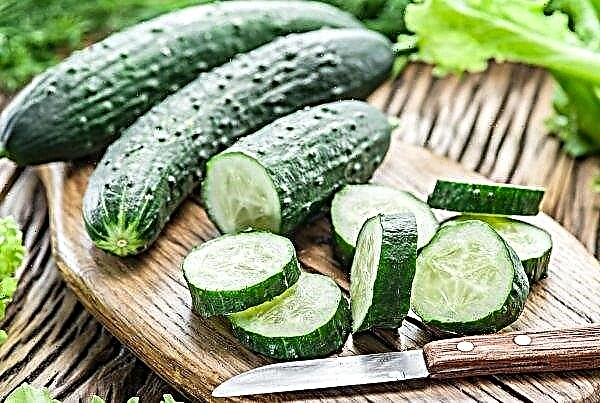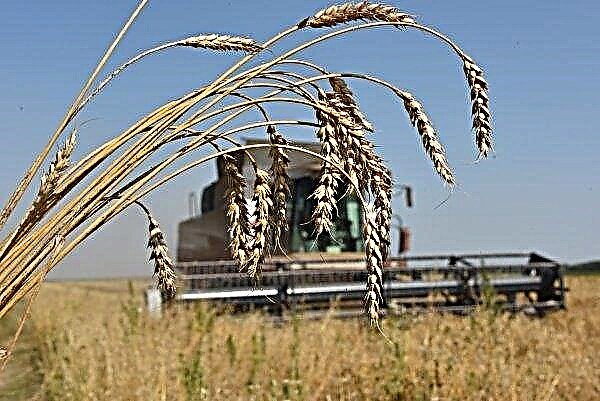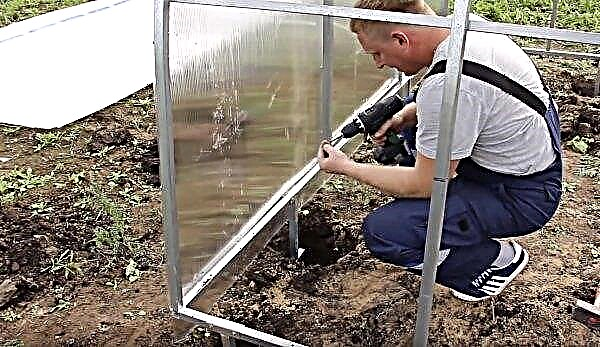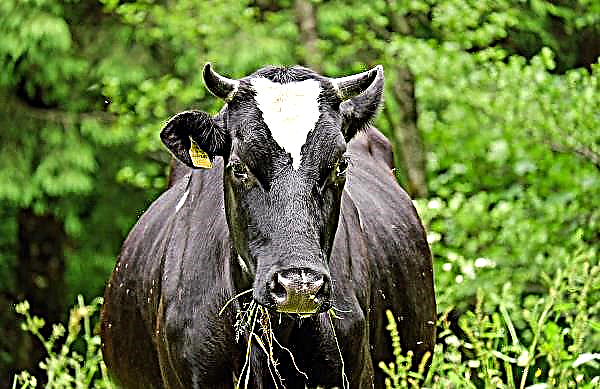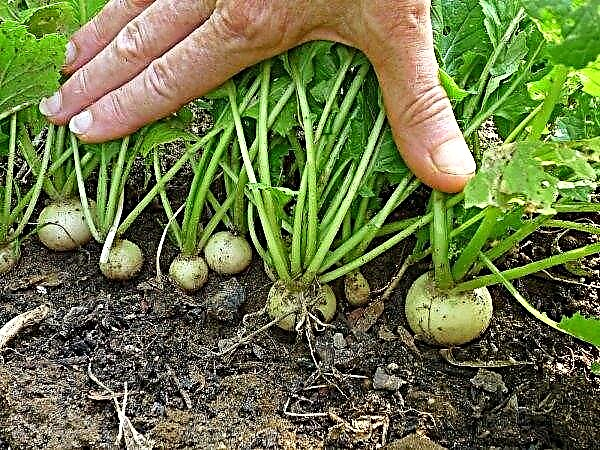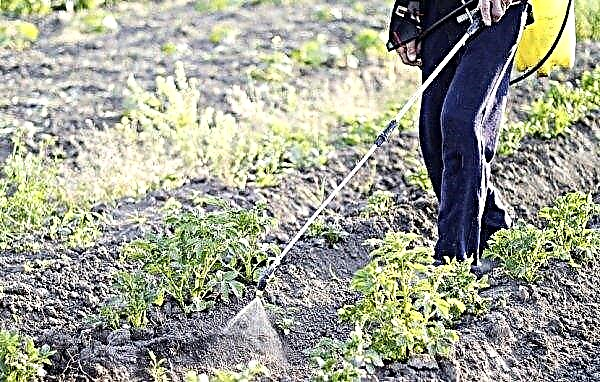If you are fond of home gardening and want to replenish your collection with something exotic, we advise you to pay attention to such an unusual plant as carnosa hoya. This flower is able to captivate the beauty of any person. We will talk about the features of its cultivation in our article.
Botanical description of the plant
Hoya carnosa is an exotic plant that lives in the wild in Australia, southern China, and also on the Pacific islands. The life span of a flower is up to 15 years. It blooms throughout June and July, and then, after a short break, in September.
The flowers are small, collected in dense umbrellas up to 2 cm in diameter. Their main difference is a strong honey smell.| Root system | Developed |
| Stem | Curly, up to 10 m long, has many shoots |
| Leaf shape | Pointy |
| Leaf color | Dark green |
| Flower shape | Star |
| Flower color | White, pink, red |
Main types
In the wild, more than 200 species of hoya grow.
Did you know? The flower was named after the English gardener Thomas Hoy, who first began to grow this plant indoors at the end of the 18th century.
Consider the main varieties that are grown indoors:
- Hoya Carnosa Variegat. This species differs from the actual carnosa hoya in flowers. They are light pink with a white trim.
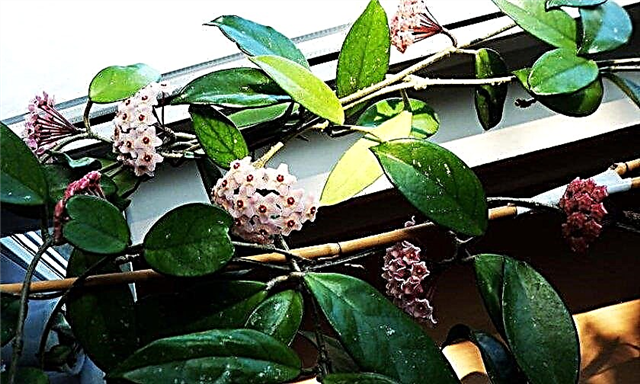
- Hoya Kerry. It has large fleshy leaves in the shape of a heart, which can be half the size of a person’s palm. The color of the flowers is white with red. This species is necessarily grown with support because of the large and heavy leaves.
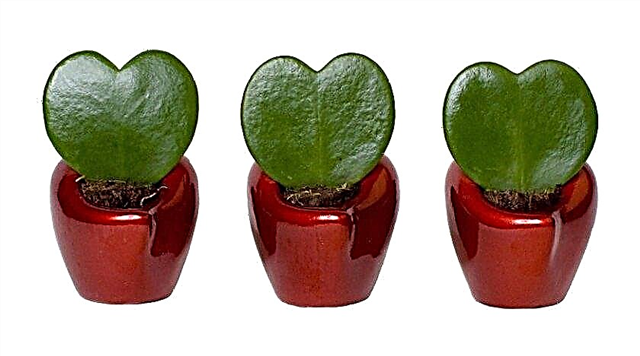
- Hoya compact. The leaves are twisted, resembling curls in appearance. Inflorescences are small and compact. Hence the name of the variety. The color of the flowers is pale pink.
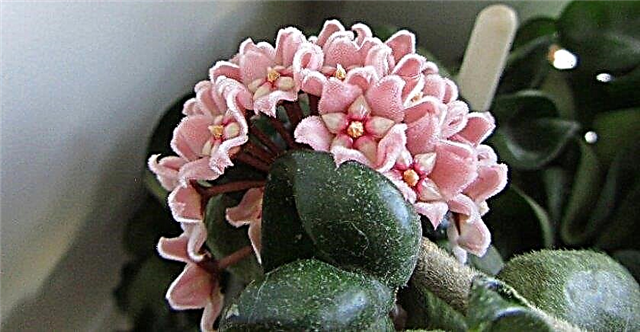
- Hoya Lacunose. The leaves of the plant are bent at the edges. They are dark green in color with white small dots all over their surface. The flowers are white, pubescent, with a small yellow or cream asterisk in the center. This species has a very strong, but pleasant aroma.
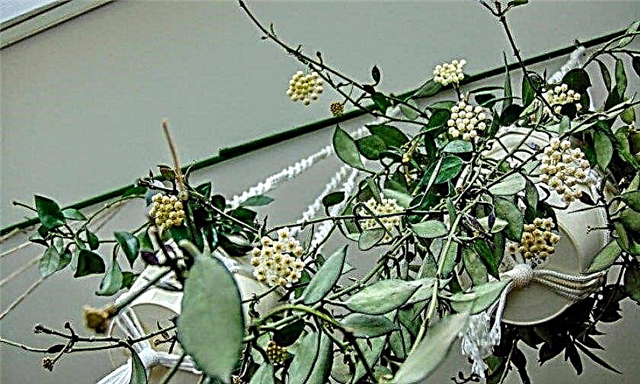
- Hoya linearis. The leaves are thin, outwardly similar to long needles. Leaves with a gray tint, slightly pubescent. The flowers are white or cream with small villi.
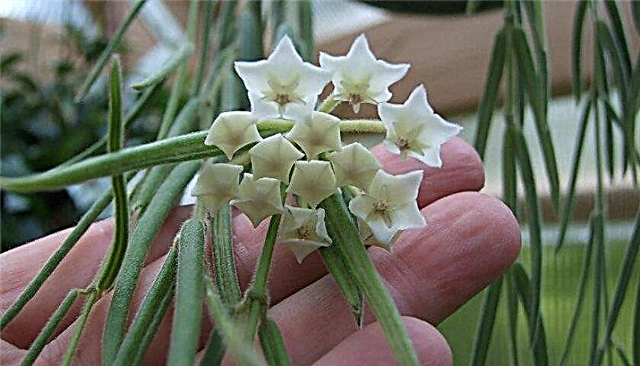
- Hoya multiflora. It differs from other species in that it grows in the form of a bush. The leaves are large, oval. Flowers outwardly resemble a spiky star. They are white in color with yellow tips. With proper care, this species can bloom year-round.
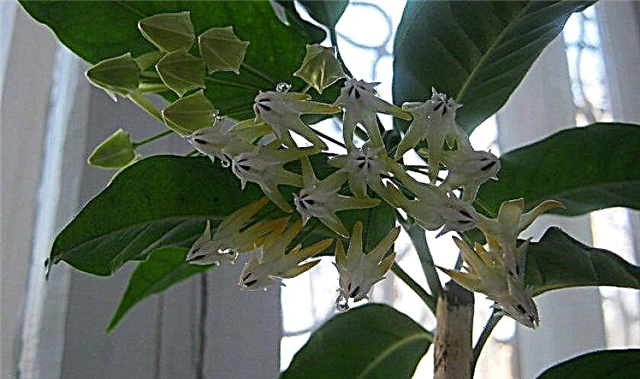
- Hoya is hired. The plant differs from other species in large round leaves of bright green color with small pale spots. The flowers are light pink with a dark raspberry star in the middle. Flowers are collected in 30-tree cluster inflorescences. Their smell resembles that of a rose.
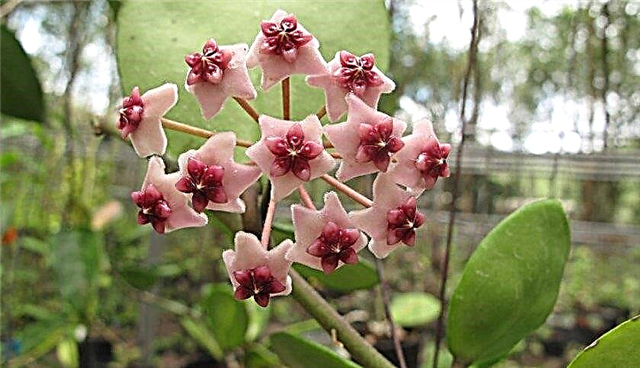
- Hoya bella. The leaves are thin, long, resembling a rounded arrowhead. The flowers are white, with a burgundy star in the center. They are collected in cluster-shaped inflorescences of 7–9 pieces.
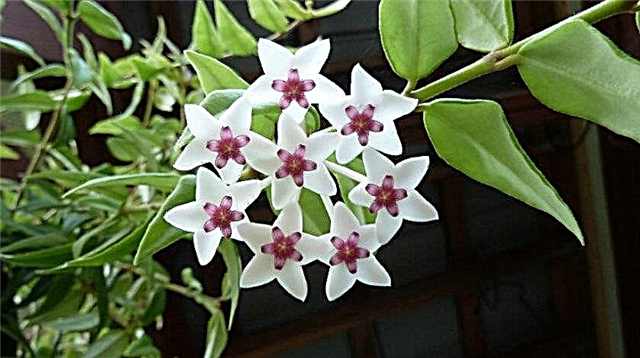
- Hoya Flavida. The leaves are oval, pale. A distinctive feature is the yellow color of the flowers with a small burgundy star in the center.
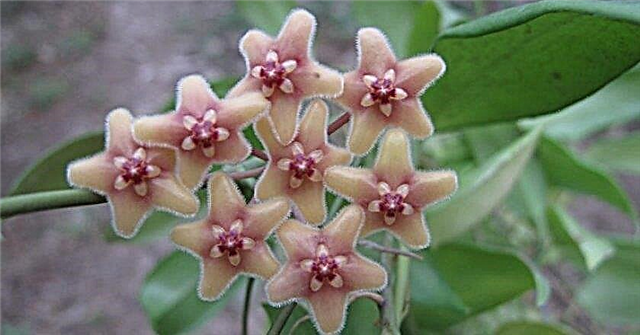
- Hoya Carnosa Tricolor. This species is very unusual in appearance. The leaves are milky white in the middle, bright green at the edges, with pink streaks. Hence the name of the species. The flowers are light purple with a dark red middle.

- Hoya retuza. The leaves are thin, elongated. At the end they are heart-shaped. The flowers are white, with a purple center. This species has an original aroma similar to the smell of lemon.
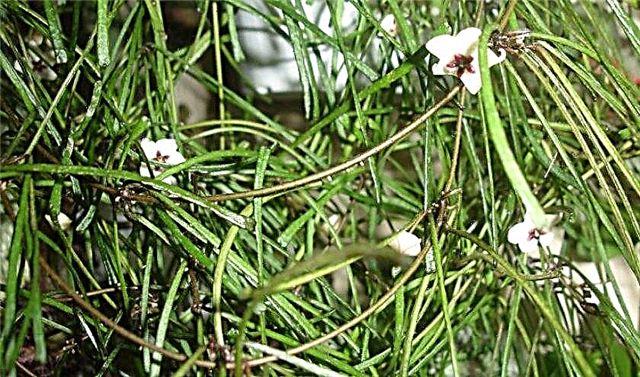
- Hoya Polyneira. This species grows in the form of a bush. Leaves look like a rhombus. They have dark green veins. Milky-colored outer star bent down. The inner star is burgundy. It can bloom for a whole year.
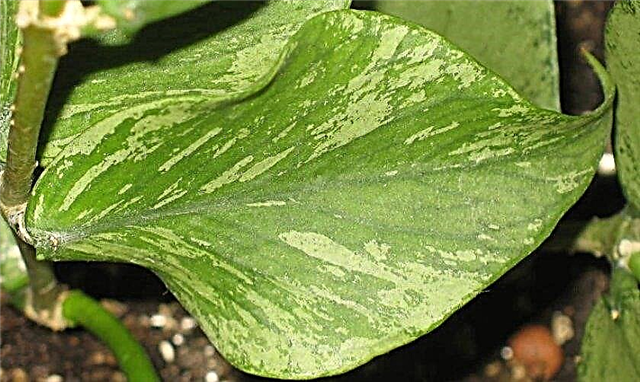
- Hoya Kaudata. The leaves are ovoid. The flowers are white, fleecy, with a dark star in the middle.
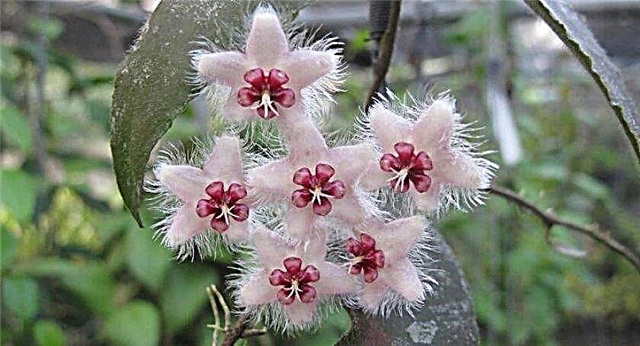
Microclimate
If you want your indoor hoya to please you with its appearance for a long time, you need to create an appropriate microclimate for it.
Video: Hoya carnosa plant review
Location and Lighting
A hoya pot is best placed on the south windowsill, as this flower is photophilous. Thus, you will provide the plant with the desired level of lighting. But keep in mind that direct sunlight adversely affects the hoya, so they should be avoided. With insufficient lighting, the hoya will not bloom.
Important! Do not change the location of the hoya and do not rotate it after the buds appear, because it will reset them. Protect the plant from drafts.
Temperature and humidity
In summer, the room temperature (+20 ... + 25 ° С) is quite suitable. In winter, you need to lower the room temperature for the flower to + 15 ° C. Hoya needs high humidity (80% and higher). This is due to the fact that the plant in the wild lives in areas with a humid climate. To increase humidity, it is helpful to spray the hoya. This should be done so that water does not fall on the buds and flowers.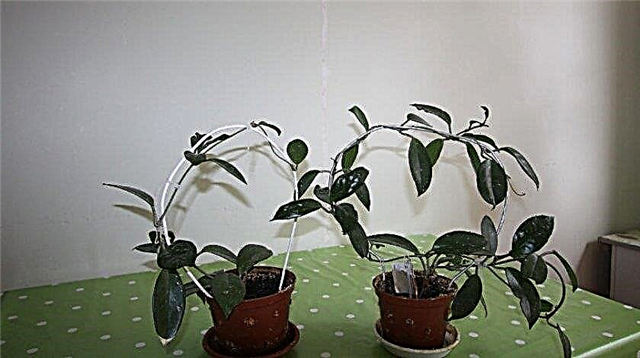
Home Care
Hoya is unpretentious in leaving. But still you need to know the main recommendations that will allow the plant to grow and develop well.
Watering
Hoya is poured with water at room temperature using the root method. In summer, the plant needs more water than at other times of the year, so watering should be plentiful, necessarily as the top layer of the soil dries. In the cold season, watering should be reduced. Hoya tolerates a lack of moisture better than its excess.
Important! After watering, drain the water from the pan of the pot, otherwise the roots of the flower will begin to rot.
Fertilizer application
Hoya fertilizers must be applied throughout the year, except for winter. Once a month, use Osmokot top dressing. Spray the flower twice a month with liquid humus, such as Biohumus. Use these products according to the instructions on the packaging.
Pruning
Hoya carnose cannot be cut, as this will be stressful for the flower, because of which it can become sick. You can not even remove old peduncles. After a while, they will bloom again. Only damaged leaves can be removed.
Transfer
It is recommended to transplant the hoya in April every 2-3 years, not more often, since frequent transplants are stress for the plant. Hoya is transplanted into a special soil consisting of leafy, soddy ground and humus (3: 2: 2). You can buy special soil for palm trees or add moss-sphagnum, crushed tree bark to the prepared soil.
Hoya is transplanted into the pots. It should be slightly larger in diameter than the previous one. A plant begins to bloom only when the roots fill the entire pot. Hoya blooms profusely in a tight container. Too large a pot will slow this process down. Make sure that there is a drainage hole in the pot to let out excess moisture and allow oxygen to flow to the roots of the plant.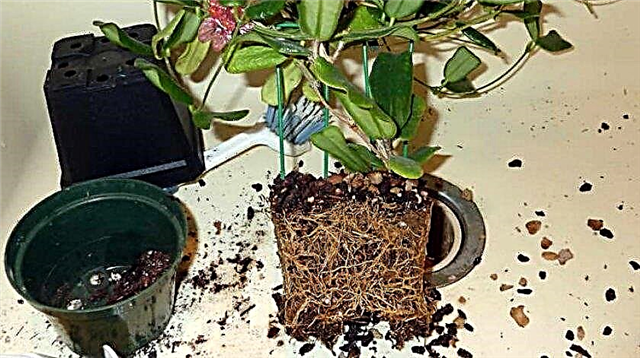 The flower is transplanted in the following sequence:
The flower is transplanted in the following sequence:
- First, carefully remove the plant from the old pot, tilting it slightly.
- Free the roots from the ground. See if they are healthy. Remove damaged parts.
- Fill most of the new tank with pre-prepared soil.
- Put the flower in a new pot.
- Pour the rest of the soil into it, ram it on top.
- Water the hoya and set it in a sunny place.
Breeding
Propagate the plant using cuttings and seeds. Consider each of the methods in more detail.
Video: Hoya breeding
Cuttings
For this, apical cuttings are used, which are cut at a level of 10-15 cm from the top. There should be several buds on the handle. To root a new plant, plant it in peat mixed with sand in a 1: 1 ratio. Moisten the soil. Keep a pot with a planted handle in a very warm place.
Important! The higher the temperature in the room, the faster the root will take root.
Another way is to place the stalk in water and put in a warm place. After about two weeks, roots will appear. Having noticed them, cuttings are immediately planted in the soil.
Seed cultivation
Hoya seeds resemble dandelion seeds. They need to be collected from flowers and dried. After that, the seeds are planted in the same soil as the cuttings. To seed quickly sprouted, put the pot with them in a warm place. Water the soil regularly as soon as its top layer dries. At the same time, avoid waterlogging of the substrate. After 3 months, healthy plants are taken from all seedlings and planted in a separate container. You can sow seeds also in moistened sphagnum moss, wrapped in a nylon net and placed in a warm place. In this case, the seeds will sprout faster. Once they germinate, small plants are planted with moss in a pot.
After 3 months, healthy plants are taken from all seedlings and planted in a separate container. You can sow seeds also in moistened sphagnum moss, wrapped in a nylon net and placed in a warm place. In this case, the seeds will sprout faster. Once they germinate, small plants are planted with moss in a pot.
Growing difficulties
During the cultivation of hoya, flower growers may encounter difficulties that are represented by diseases and pests:
- Fungus. You can get rid of it by spraying the plant with a 1% solution of Bordeaux fluid. For prevention, wash the hoya regularly in the shower.
- Thrips and scale insects. You can get rid of pests with the help of special drugs ("Doctor Foley", "Fitoverm", "Trichophyte"). They are used according to the instructions. As a preventative measure, wash the plant from time to time in the shower.
- Mold on the surface of the soil. Appears from excess moisture. In this case, reduce watering.
- Dark spots on the leaves. Appear as a result of exposure to the plant in direct sunlight, which should be avoided.
- Lack of flowers. This happens when there is insufficient lighting, if the room temperature is too high in the winter, if the hoya grows in a very close pot and lacks nutrients. Find out the cause of the lack of flowering and eliminate it.
- The leaves are dry. This is a sign of low humidity. It needs to be increased.
Did you know? The aroma of hoya can cause allergies, so people with an increased allergic reaction should stop growing this flower. In addition, hoya leaves contain weak toxins. Keep pets and children away from contact.
Hoya karnoza is a unique plant that is suitable even for beginner growers. Adhering to the rules for caring for this exotic flower, you can enjoy the beauty that this plant will give you for a long time.
















